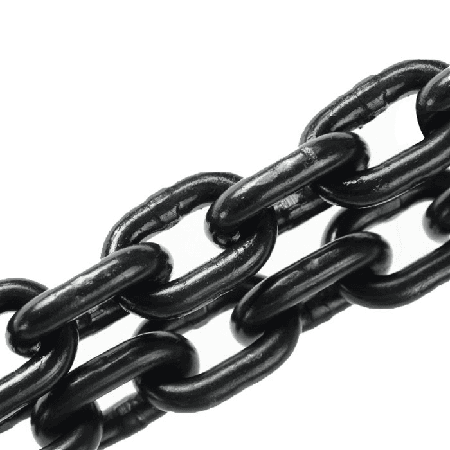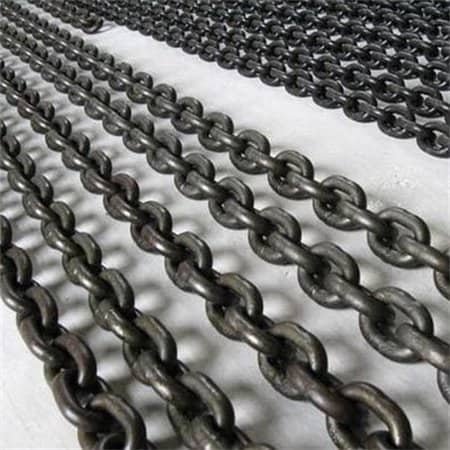How to Choose the Right Lifting Chian for Different Working Environments?
Lifting chains are widely used in the industrial sector to lift and move heavy loads. However, different working environments require specific chain materials and properties. Selecting the right chain can improve work efficiency and ensure operational safety.

Different Types of Lifting Chains
Understanding the main types of lifting chains and their characteristics is the first step in making the right choice.
G80 Lifting Chain: The most commonly used industrial-grade chain made of alloy steel, known for its high strength and wear resistance. It is suitable for heavy-duty applications.
G100 Lifting Chain: Offers higher strength than G80 chains, making it ideal for high-risk scenarios such as construction sites, mining, and heavy industry.
Stainless Steel Chain: Known for its excellent corrosion resistance, it is suitable for humid, marine environments, or chemical plants.
Galvanized Chain: Coated with a rust-resistant layer, making it ideal for outdoor environments where exposure to rain and moisture is common.
Choosing Chains Based on Working Conditions
Humid and Corrosive Environments
For environments with high humidity or corrosive substances, stainless steel chains or galvanized chains are the best choices. These chains can effectively resist moisture, salt spray, and chemicals, ensuring long-term safety.
High-Temperature or Extreme Cold Environments
In extreme temperature environments, it is recommended to use alloy steel chains. These chains maintain their strength and toughness even under high or low temperatures. However, it’s essential to check the chain’s temperature limits to avoid performance degradation.
Chemical Plant Environments
Chemical plants often contain acids, alkalis, and other chemical substances. Stainless steel chains are ideal due to their excellent chemical corrosion resistance, preventing chain damage.
Outdoor Environments
Chains used outdoors are often exposed to rain and snow. Galvanized chains or special coating chains can effectively prevent rusting and aging, extending the chain’s service life.
Consider Load Capacity and Usage Frequency
Apart from environmental factors, the chain’s load capacity and usage frequency are also crucial criteria.
High-frequency, heavy-load operations: G80 or G100 chains are recommended due to their superior load capacity and durability.
Low-frequency, light-load operations: Standard chains can be used, but regular inspections are still necessary.
Conclusion
Choosing the right lifting chain for the working environment can improve work efficiency and ensure operational safety. By selecting the appropriate chain type and material based on different environmental requirements and following safe usage practices, you can extend the chain’s service life and reduce safety risks.


